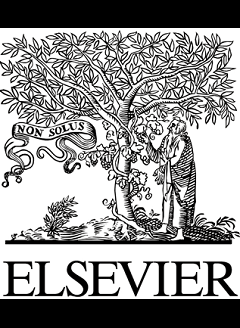دانلود رایگان مقاله مدل مبتنی بر فعالیت برای شهرهای سایز متوسط با توجه به فعالیت – سفر خارجی – سال 2019


مشخصات مقاله:
عنوان فارسی مقاله:
مدل مبتنی بر فعالیت برای شهرهای سایز متوسط با توجه به فعالیت – سفر خارجی: افزایش چارچوب FEATHERS
عنوان انگلیسی مقاله:
Activity-based model for medium-sized cities considering external activity–travel: Enhancing FEATHERS framework
کلمات کلیدی مقاله:
مدل مبتنی بر فعالیت، فعالیت – سفر خارجی، سفرهای خارجی، FEATHERS، اعتبار سنجی مدل مبتنی بر فعالیت
مناسب برای رشته های دانشگاهی زیر:
مهندسی معماری – شهرسازی – مهندسی کامپیوتر – مهندسی فناوری اطلاعات – گردشگری و توریسم
مناسب برای گرایش های دانشگاهی زیر:
طراحی شهری – مدیریت شهری – شبکه های کامپیوتری – مدیریت گردشگری
وضعیت مقاله انگلیسی و ترجمه:
مقاله انگلیسی را میتوانید به صورت رایگان با فرمت PDF با کلیک بر روی دکمه آبی، دانلود نمایید. برای ثبت سفارش ترجمه نیز روی دکلمه قرمز رنگ کلیک نمایید. سفارش ترجمه نیازمند زمان بوده و ترجمه این مقاله آماده نمیباشد و پس از اتمام ترجمه، فایل ورد تایپ شده قابل دانلود خواهد بود.
فهرست مطالب:
Outline
Highlights
Abstract
Keywords
۱٫ Introduction
۲٫ Literature review
۳٫ Research framework
۴٫ Case study
۵٫ Model validation
۶٫ Discussion
۷٫ Conclusion and future work
Acknowledgment
References
قسمتی از مقاله انگلیسی:
Abstract
Travel demand modeling has evolved from the traditional four-step models to tour-based models which eventually became the basis of the advanced Activity-Based Models (ABM). The added value of the ABM over others is its ability to test various policy scenarios by considering the complete activity–travel pattern of individuals living in the region. However, the majority of the ABM restricts residents’ activities within the study area which results in distorted travel patterns. The external travel is modeled separately via external models which are insensitive to policy tests that an ABM is capable of analyzing. Consequently, to minimize external travel, transport planners tend to define a larger study area. This approach, however, requires huge resources which significantly deterred the worldwide penetration of ABM. To overcome these limitations, this study presents a framework to model residents’ travel and activities outside the study area as part of the complete activity–travel schedule. This is realized by including the Catchment Area (CA), a region outside the study area, in the destination choice models. Within the destination choice models, a top-level model is introduced that specifies for each activity its destination inside or outside the study area. For activities to be performed inside the study area, the detailed land use information is utilized to determine the exact location. However, for activities in the CA, another series of models are presented that use land use information obtained from open-source platforms in order to minimize the data collection efforts. These modifications are implemented in FEATHERS, an ABM operational for Flanders, Belgium and the methodology is tested on three medium-sized regions within Flanders. The results indicate improvements in the model outputs by defining medium-sized regions as study areas as compared to defining a large study area. Furthermore, the Points of Interests (POI) density is also found to be significant in many cases. Lastly, a comprehensive validation framework is presented to compare the results of the ABM for the medium-sized regions against the ABM for Flanders. The validation includes the (dis)aggregate distribution of activities, trips, and tours in time, space and structure (e.g. transport modes used and types of activities performed) through eleven measures. The results demonstrate similar distributions between the two ABM (i.e. ABM for medium-sized regions and for Flanders) and thus confirms the validity of the proposed methodology. This study, therefore, shall lead to the development of ABM for medium-sized regions.
1. Introduction
The notion that the need for activity participation derives its associated travel, led to the formation of the Activity Based Model (ABM) (Ben-akiva et al., 1996). A typical ABM considers the complete daily activity-travel pattern of individuals living in the study area. This includes, for each agent in the synthetic population, the number of activities to be performed and specific attributes of each activity: type, start time, duration, and location. Furthermore, these simulated activities are also linked together via a travel component having its own dimensions: travel time, travel mode. Finally, the tours are formed. Therefore, the added benefits of an ABM over a four-step model are its unit of analysis from zones to individuals and the consistency between the submodels that ensures a consistent travel pattern.



